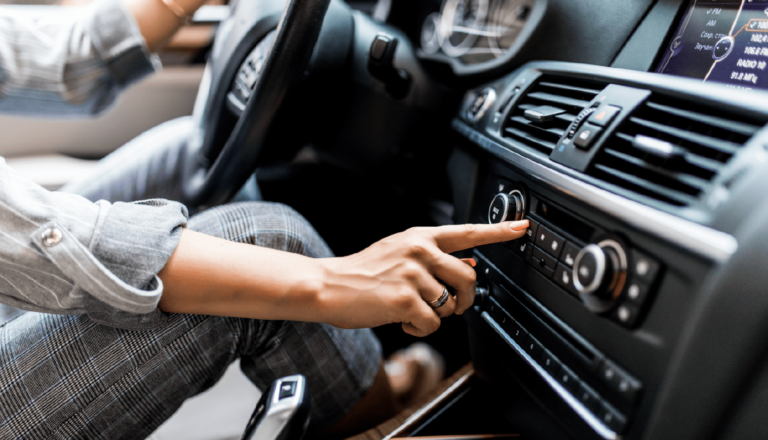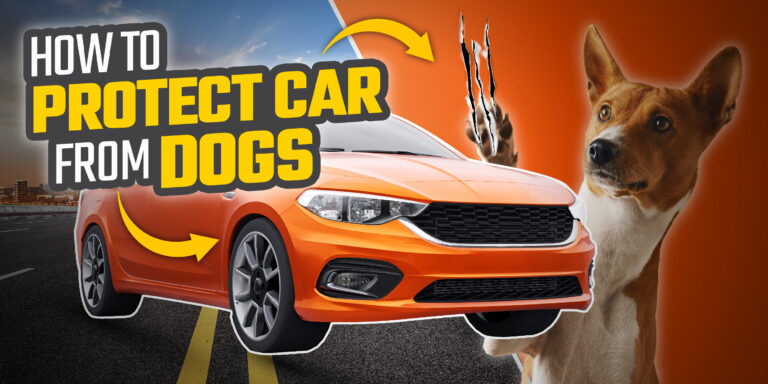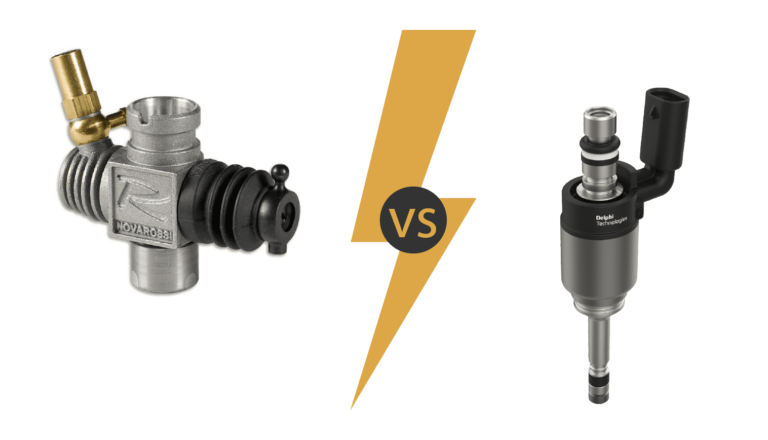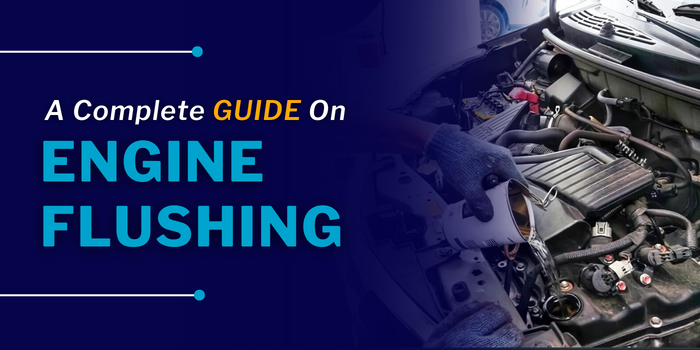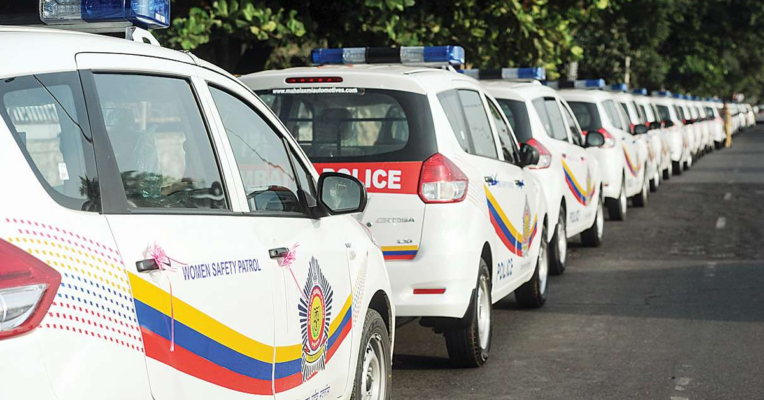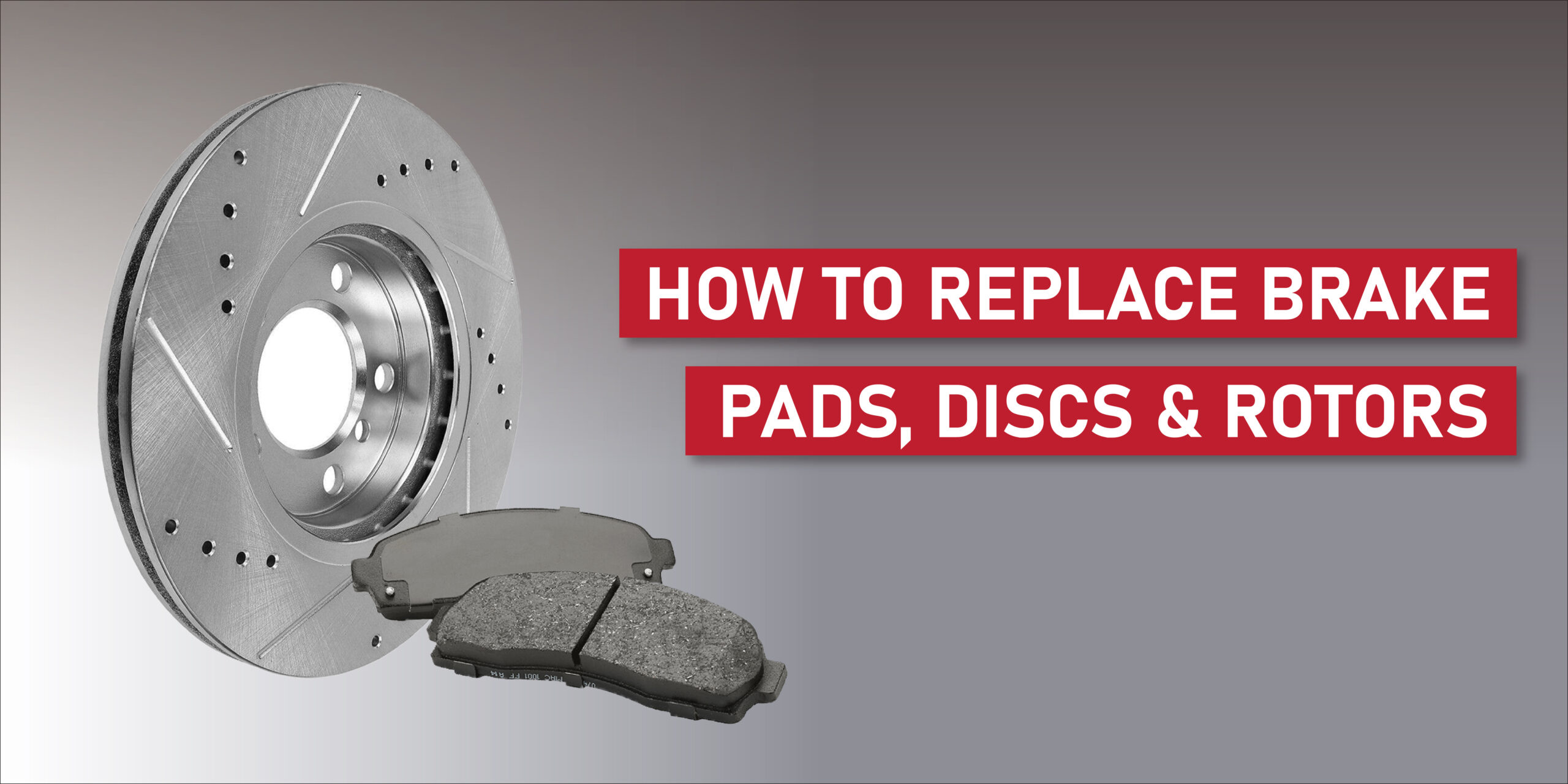
The braking system on a vehicle is one of the most integral components because it allows you to stop the car at a high rate of speed. We sometimes overlook the brakes, however, we must know the basics like how to replace brake pads, how to replace brake discs and how to replace brake rotors for our safety.
Drivers will sometimes forgot the general maintenance of the braking system, or just perform a temporary fix to solve a problem. But this could end up as a disaster in case the brakes fail.
Rotors, brake pads and brake discs have a shelf life and are subject to wear and tear during their daily use. The cost to replace brake pads is small compared to the level of safety a new brake pad, rotor or disc can provide.

Let’s break down the basics to get you better acquainted with this important component of your vehicle.
What Is a Brake Rotor?
A brake rotor is part of the braking system of your vehicle. It is constructed out of steel or carbon-ceramic in a disc shape connected to the vehicle’s axle. The brake rotors turn along with the wheels as the vehicle moves forward. They are also called brake discs.
What Is a Brake Pad?
The brake pad is defined as a small piece of high friction material that slots into the brake caliper. When the brake pedal is applied, it transfers the force to the caliper and the brake pad is clamped around the rotor or disc to stop it from spinning.
How do brake rotors (discs) work?
The brake rotors or discs spin along with the wheels of the vehicle as it moves forward. When pressure is applied to the brake pedal, the force is transferred to the brake caliper which has brake pads that clamp down on the rotor. The ensuing friction between the brake pad and the rotor slows it down to reduce the speed of the vehicle.

How long do brake rotors and brake pads last?
Brake rotors made of steel are designed to last up to 100,000 km if used properly. If brake pressure is applied or they are used more frequently, brake rotors and pads may last for fewer kilometres.
There are stronger materials used for rotors such as carbon-ceramic which are designed to last the lifetime of the vehicle. But then again, it depends on how they are used and in what conditions.
Also read What Is An Alternator And How Does It Work?.
What are the different kinds of brake rotors?
Steel
Steel brake rotors are generally seen on passenger cars, but they may be drilled, slotted or vented depending on their application. Daily driving cars usually have all-steel construction brake rotors which are inexpensive. Race cars have slotted, cross-drilled or vented rotors to aid cooling efficiency or to save on weight. The rotors will have holes drilled in them, slots or other types of designs.
Carbon-fibre or carbon-ceramic
These kinds of brake rotors were originally used on race cars and saw the technology being used on supercars that borrowed them for their superior cooling and stopping abilities. Carbon-ceramic brakes also last longer and are more efficient than steel brakes.

How do brake rotors and pads wear out?
The more you use the brakes, the faster the rotors and pads get worn out. The way you use your brakes also has an impact on wear and tear. Excessive pressure on the brake pedal instantaneously can cause hard stops, while resting your foot on the brake while driving can wear them out. Not allowing the brakes to warm up along with environmental stress can impact the brake rotors and brake pads’ health.
How do you replace brake pads?
Brake pads wear down over time and help slow down and stop the vehicle while driving. If the effectiveness of the brakes decreases then it may be time to replace the brake pads.
When the brake pads are worn out, they may squeal or squeak or the vehicle may start pulling to one side while slowing down.
Changing the brake pads improves the car’s performance, safety and reliability. Follow these easy steps to change the brake pads.
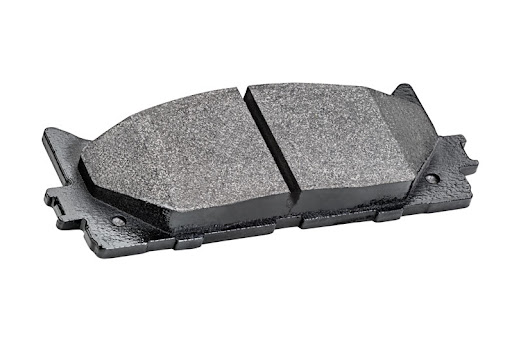
- Loosen the lug nuts on the wheel
- Lift the vehicle using a jack
- Position jack stands beneath the vehicle
- Remove the tyre, the brake caliper assembly should now be visible
- Loosen the bolts on the brake caliper assembly
- Remove the brake caliper
- The brake pads should now be visible, remove them from either side of the rotor
- Prepare and install the new brake pads, apply grease on the backs of the brake pads
- Position the new brake pads where the old ones were, double-check their orientation
- Adjust the brake caliper assembly to fit the new brake pads
- Refit the brake caliper assembly as before
- Reinstall the tyre and tighten the lug nuts
- Lower the car using the jack
Test the braking operation on the car and make sure it brings the vehicle to a stop.
How to replace the brake disc?
If your brake pads are badly worn, they may lead to the scoring of the brake disc. In this case, you will have to replace the brake disc also known as the brake rotor.
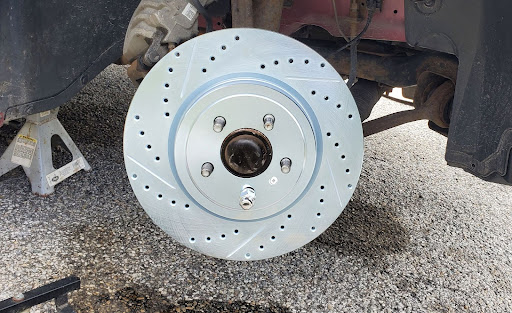
Follow these easy steps to replace the brake disc.
- Loosen the lug nuts of your vehicle’s tyre before you jack the car up off the ground.
- Once the car is off the ground, take off the wheel off to access the brake discs
- The discs are held by calipers, so you will need to take them off
- Take off the bolts of the caliper to remove it and access the brake disc
- Once the caliper has been removed, keep it out of the way while you access the brake disc
- Next take of the fixture that was holding the caliper in place
- Once the caliper and the fixture (carrier) are removed, you will be able to see the rotor
- The disc is held in place with bolts that may be hard to undo. Use some force to unscrew them so that the disc can be removed
- Once the stubborn bolts have been removed, you will be able to slip the old disc out of its position.
- If the disc doesn’t come out easily, then you can use a few taps of the hammer to get it out of place.
- Slide the new disc into place onto the hub. You should use new bolts for the new disc because the old ones were probably damaged and need replacement anyway
- Bolt the caliper along with the brake pads back into place
- Reinstall the wheel. Ensure the lug nuts are tightened.
Now test the brakes. Drive slowly down an empty road for a short distance and apply the brakes. If you notice anything wrong like the brakes sticking or pulling to one side, then have a professional look over it immediately.
Replacing brake pads, discs and rotors are not minor repairs
Most modern cars come with disc brakes at the front wheels. This is because up to 80% of the braking force is at the front of the vehicle. As a result, brakes wear out faster at the front.
Disc brakes last longer than drum brakes, so most car manufacturers use disc brakes at the front wheels to prevent you from changing the brakes often. Cars are also available with disc brakes on all four wheels, due to their superior stopping power and safety in emergencies.
The process of replacing brake pads and discs and rotors can be done in your home garage without the use of any specialist tools or equipment. Doing the job yourself also saves you a bit of money on labour which can be quite expensive these days.
The cost to replace brake pads is around Rs.5,000 and if you need to replace the brake discs or rotors as well, it may cost up to Rs.10,000. Brakes are vital for the safety of the driver and passenger.
When to replace brake pads?
A general rule of thumb is that you should have your brake pads replaced every 15,000 km – 30,000 km to make sure wear and tear don’t render your braking system inadequate in an emergency.
Brake discs or rotors generally have a longer life and can be replaced every 80,000 km – 100,000 km to keep the braking system in good health.
As soon as you hit these milestones, you can follow the steps outlined in this article to inspect the brake pads, and brake discs and replace them if necessary.
Signs that your brake pads and rotors need replacing
If you are unaware of the exact mileage that the braking system has been used for, there are certain indications for a brake replacement (either the pads or the rotor).
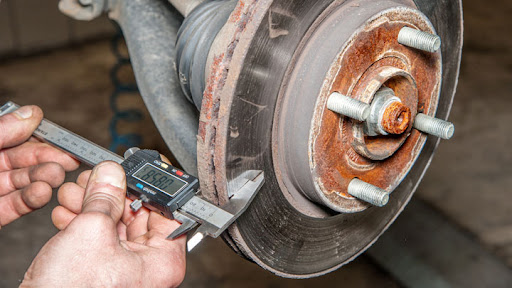
Some of the warning signs of worn-out brakes and components that you should be aware of are:
Screeching or squealing from the brakes – This is the most obvious sign that your brakes are due for a change. If you hear a high-pitched squeal or screech as you apply the brakes to slow down, it is an indication that your brakes need replacement.
Vibrations in your steering wheel – If you notice that the steering rumbles and vibrates when the brakes are applied, it could be a sign that the brake pads are worn out and the brake discs or rotors are being exposed to excessive heat. The brakes should be inspected for signs of wear and replaced if necessary.
Grinding noises – If the screeching and squealing sounds have disappeared and you are now hearing a deep grumble and grinding noise, it means that the brake pads are fully worn out and the metal is rubbing against each other. This will destroy the brake discs in time, so it is advisable to have them replaced immediately.
Conclusion
Safe driving means different things to different drivers, but one thing they can agree on is the braking system is the very heart of safety. Slowing down a vehicle, or bringing the car to a complete stop in an emergency can save lives. That is why it is important to keep a close eye on your braking system and replace worn-out components as soon as they show signs of wear and tear.
Brake pads, brake rotors or brake discs are the main components that make up a braking system and should be inspected at regular intervals when you get your car serviced or when you notice something is wrong.
The driver of a car knows what safe braking feels like better than anyone else. Replacing your brake pads and brake rotors when the time calls is the best way to ensure a safe drive and guarantee that you always stop your car in an emergency.
Also read What Is A Handbrake? Know Its Functions.
Frequently Asked Questions
Q1. How much does it cost to replace brake pads and rotors?
Ans. You can expect a brake job to replace rotors and pads on a regular passenger car to cost somewhere between Rs.10,000 and Rs.15,000 per axle on average.
A heavy-duty truck or larger vehicle may cost you more to replace brake parts.
Q2. When do I replace brake pads and rotors?
Ans. Brake pads and rotors should only be replaced when they are worn out (the pads) or the rotors are warped. It doesn’t happen often because brake rotors are engineered to last up to 50,000 km if they are made from standard steel.
There are other materials that rotors can be made of like carbon fibre and carbon ceramic which last longer, although they are more expensive to replace.
Q3. Do you need to replace brake rotors along with a brake pad replacement?
Ans. Brake pads are consumable items and fade very fast compared to brake rotors. So, you will not have to replace a brake rotor every time you replace the brake pads. Brake pads last for about 30,000 km while brake discs or rotors last for about 100,000 km. If the rotors are made from carbon-ceramic materials, they last even longer than 100,000 km.
However, when it is finally time to replace a brake rotor, you should also replace the brake pads. When brake pads are replaced, you should make sure to do a brake rotor inspection.

